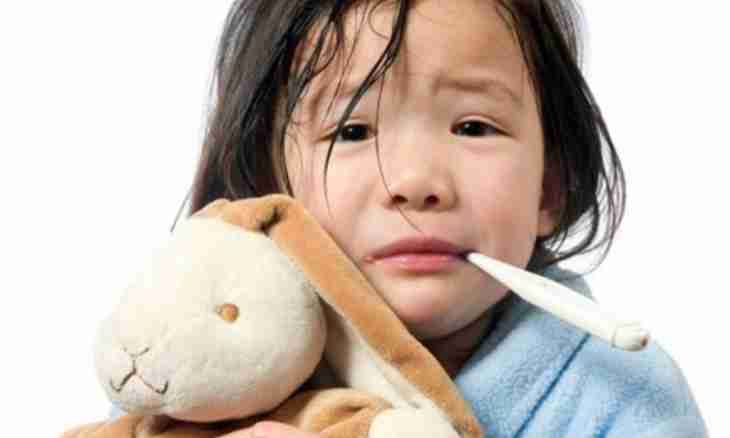To the most known nurseries infectious bolezny carry those from them which are transferred in the airborne way and gain the nature of epidemics. It is very important to begin in time treatment as development of complications is possible.
Instruction
1. Children's infections are a group of infectious diseases which are most widespread in children's age group. Are transferred in the airborne way and get epidemic distribution. The rubella, measles, chicken pox, diphtheria, whooping cough, parotitis, scarlet fever, a pneumococcal infection, poliomyelitis and a hemophilic infection are considered as traditionally children's diseases. Here it is possible to carry infectious mononukleoz, a meningococcal infection, sharp respiratory and intestinal infections, hepatitis A.
2. Why these diseases are so easily transmitted from one child to another? Because at a conversation of the patient can spray them from itself on long distance. It is necessary to consider that children use the same objects of use, toys, furniture, ware, etc. Besides the majority of viruses are steady in the external environment. That is why at children's infections the frequent emergence of collective flashes is characteristic. All children's diseases of the infectious nature proceed during several periods: incubatory, prodromal, period of a heat of a disease and period of a convalescence.
3. The incubation period comes from the moment of contact of your child with a source of an infection and before emergence in it of the first symptoms of a disease. During the period the kid is on a quarantine. The term of a quarantine is defined proceeding from the maximum period of an incubation of a disease. So, the shortest term at diphtheria: from 1 hour to 10 days, and the longest at hepatitis A: from 7 to 45 days. With emergence in your kid of the first complaints the second comes – the prodromal period of a disease. Pay attention on increase at it in temperature, emergence of weakness, headaches, a fever, perspiration, fatigue, drowsiness, a loss of appetite, etc. Most often body temperature increases up to 38 °C by the end of the first - second day of a disease.
4. In the period of a heat of a disease symptoms, characteristic of this concrete children's infection, appear. Whooping cough is characterized by specific dry and paroxysmal cough. At epidemic parotitis (mumps) parotid, submaxillary and hypoglossal salivary glands inflame. The child can complain to you of their morbidity and dryness in a mouth. Diphtheria causes specific damage to a rotoglotka: increase and hypostasis of tonsils and emergence at them grayish raid. At hepatitis A eyes turn yellow, urine darkens and the kcal becomes colourless. Poliomyelitis affects central nervous system.
5. Many children's infections are followed by emergence on a body of rash and inflammation of lymph nodes. At the last stage of recovery all symptoms of an infection die away, the struck bodies restore the functions and the immunity is formed. The most minimum term of a convalescence is 3 months, the longest – year and more. At the first suspicions of an infection you need to show urgently the child to the doctor as many of these diseases are capable to cause development of heavy complications. In particular, the meningococcal infection and scarlet fever can provoke infectious and toxic shock. At whooping cough the risk of sudden respiratory standstill is high, and at diphtheria of emergence of a true croup. All intestinal infections are fraught with dehydration, and a rubella, measles and chickenpox damage of a brain.

